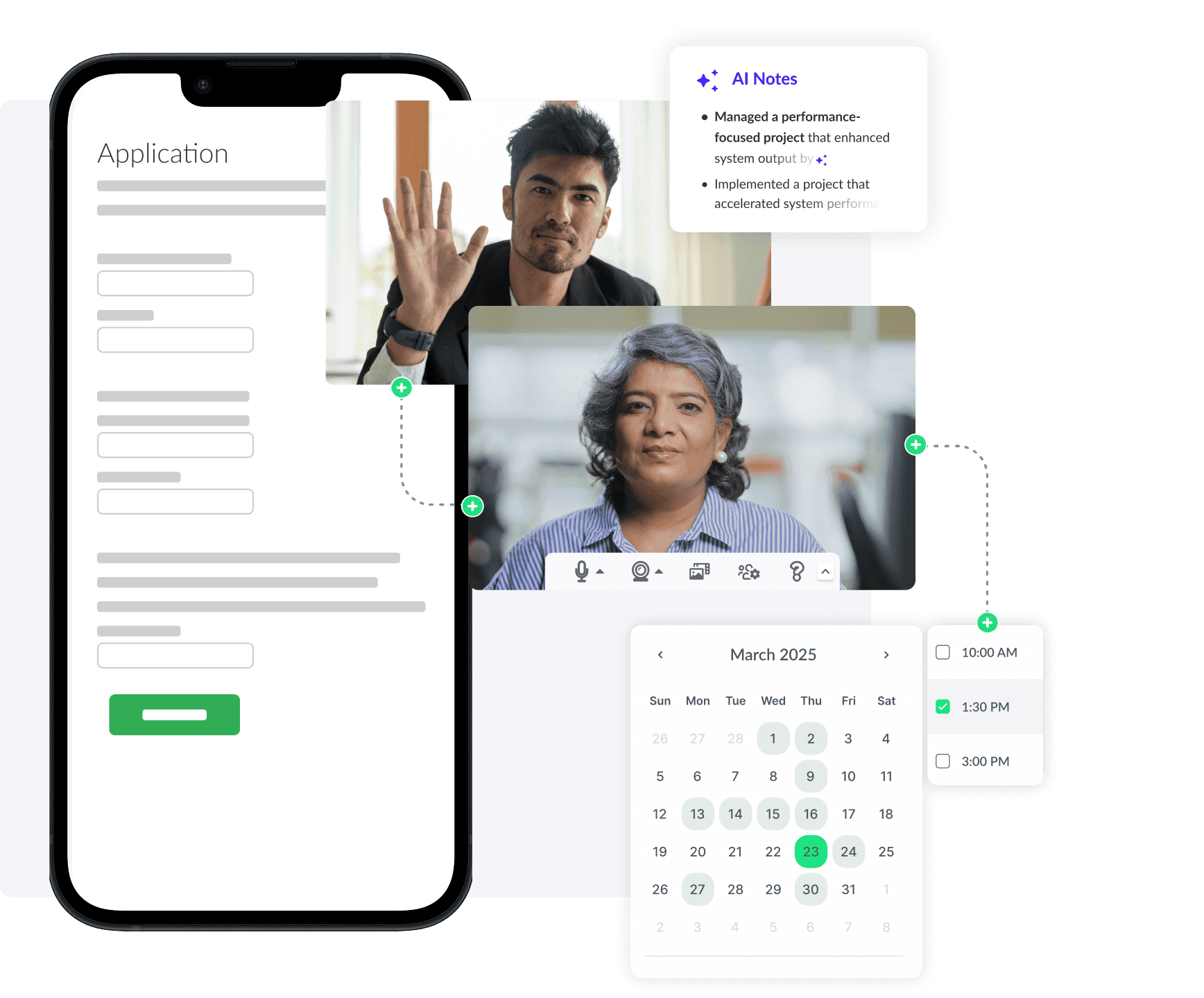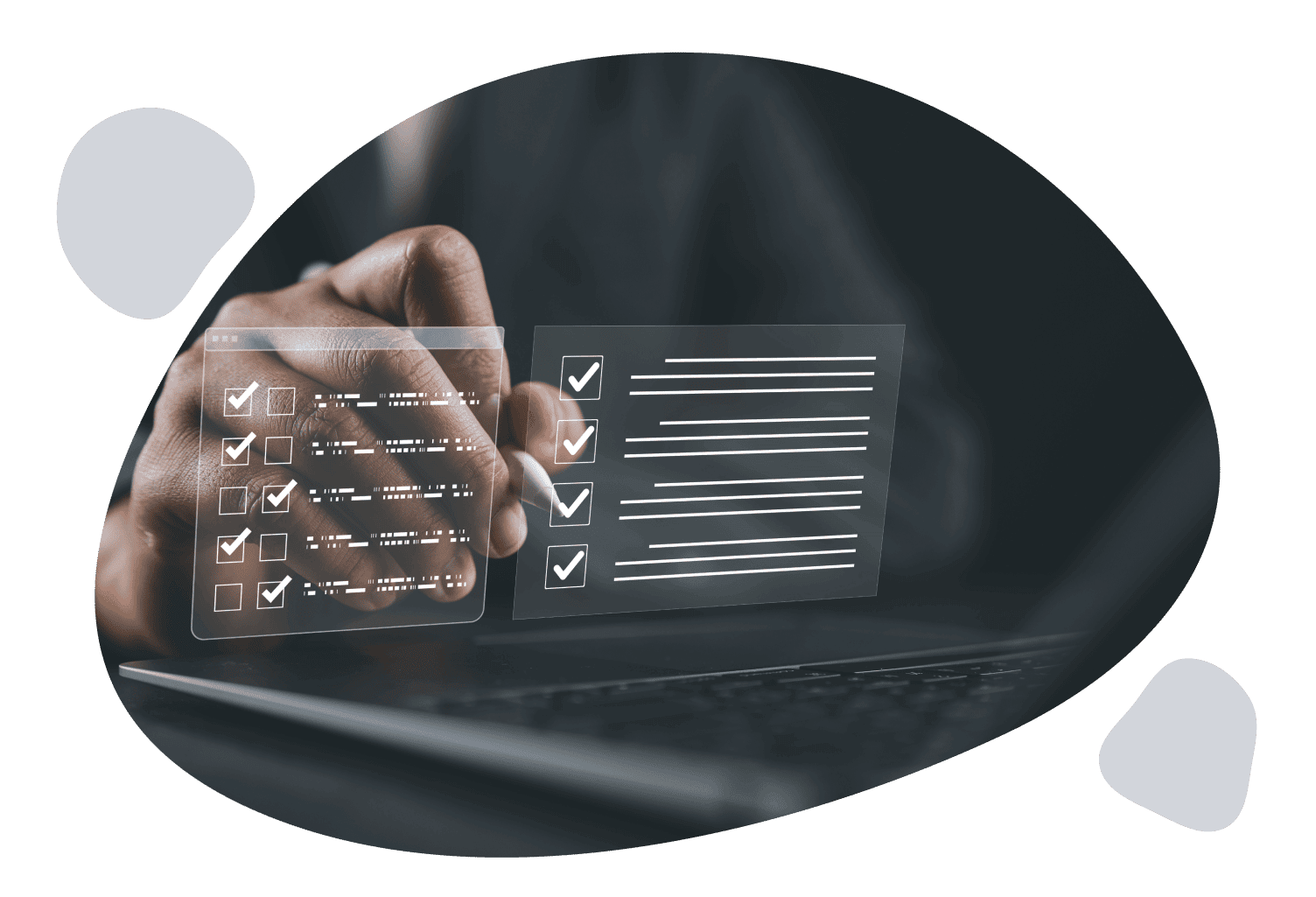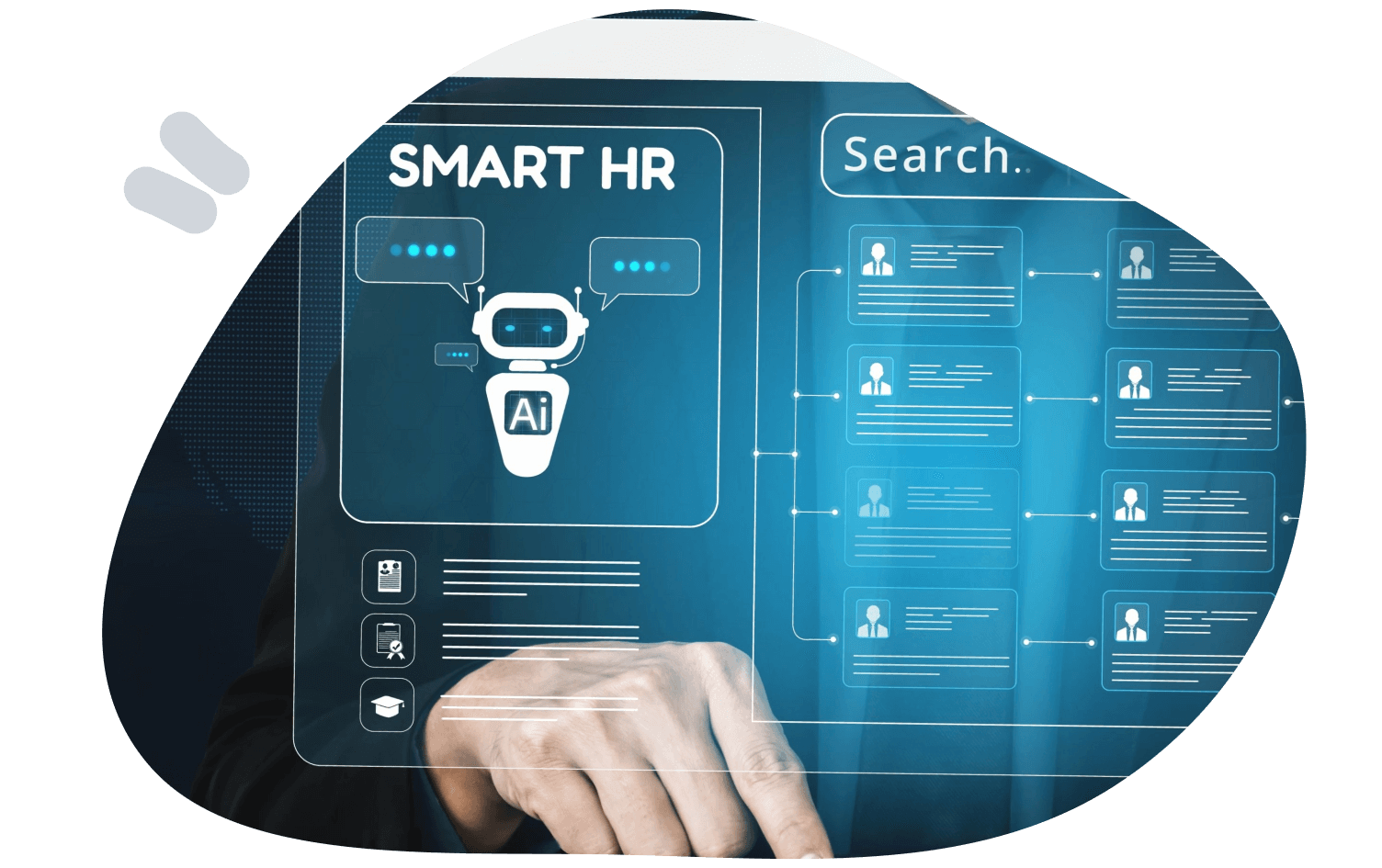
How To Conduct a Structured Interview
Learn how to conduct structured interviews effectively with our comprehensive guide.
Written by
VidCruiter Editorial TeamReviewed by
VidCruiter Editorial TeamLast Modified
Sep 26, 2025
TL;DR: Interviewing Platform Features Checklist (ATS, Compliance, AI)
Implementing a new interviewing platform is no small decision. You need to choose a system your team will rely on every day to connect with candidates, keep processes moving, and support compliance. The stakes are high. If you pick the wrong tool, you risk wasting budget, frustrating recruiters, and completing another round of vendor demos a year later.
HR and talent teams face a tricky balancing act. You need features that work for today’s hiring needs, such as simple scheduling and one-on-one video conversations, while also ensuring the platform can grow with you. As your organization scales, you may need panel interviews, support for global candidates, or stricter compliance controls. The right platform should evolve with you, not hold you back.
This article will walk you through the essential and advanced features to look for so you can choose an interviewing platform that saves time, reduces risk, and creates a better experience for both recruiters and candidates.

Choosing an interviewing platform makes an investment that will support your hiring process as it evolves. The wrong choice can mean costly implementations, frustrated teams, and a rip-and-replace software evaluation in the near future. You want to ensure that your team understands what features they need, so you can pick the tool that meets your price and expectations.
Avoiding painful switches
Switching platforms isn’t easy. Implementing, training users, and getting candidates comfortable with a system takes precious time that overloaded recruiting teams don’t have. If you realize after a few months that the platform lacks core functionality, you’re stuck starting over. Prioritizing robust features upfront helps you avoid disruption and keeps your recruiting pipeline running smoothly.
Meeting current needs
Every team has non-negotiables, whether it’s interview scheduling, structured evaluations, or compliance safeguards. A good platform should fit your workflow right away, so your team doesn’t need to patch gaps with manual processes. For small teams, that might mean something as simple as a one-to-one scheduler. For larger organizations, it could mean integrations and collaboration tools from day one.
Growing with your organization
Hiring needs rarely stay static. Maybe today you’re running single-interviewer screens, but tomorrow you may need panel interviews, advanced scheduling, or global compliance features. The right platform scales with you, offering features you can turn on as your team expands or your industry requires tighter standards. Thinking ahead ensures you won’t outgrow your solution too quickly.
When picking a vendor, ask each interviewing platform how they can help you with setup and hitting your growth initiatives. For example, you might sign up for a lower plan and then expand to include more features as your team or company grows.

When evaluating interviewing platforms, some features aren’t optional. These core features form the foundation of an effective, compliant, and scalable hiring process. The following capabilities differentiate a tool that merely hosts video calls, such as Zoom, from one that actually supports structured, fair, and efficient recruiting.
Have you ever had to update an application before hopping on a call you were already running late to? Nothing is more frustrating than downloading a new application or updating one you hardly use. A platform’s usability is the first test for both candidates and recruiters. If it’s clunky, adoption suffers, and candidates may abandon the process altogether.
The best systems:
An intuitive, mobile-ready design reduces drop-offs and reflects positively on your employer brand.
Not every interview requires real-time interaction. Modern platforms should support both:
This mix allows recruiters to move quickly through early stages while still offering a human connection when decisions carry more weight.
Interview scheduling is one of the most time-consuming parts of recruiting. Automation features change that:
For global or high-volume hiring, these tools can shave days off time-to-hire and ease frustrations for both recruiters and candidates. No more long email threads or phone tag!
An interviewing platform shouldn’t create another silo. Seamless integration with ATS and HR systems ensures:
For enterprise teams, integration is a compliance requirement. For smaller teams, it’s a time-saver that reduces repetitive data entry.
Unstructured interviews often lead to bias and inconsistent outcomes. Structured interview tools provide:
By standardizing the process, platforms help recruiters compare candidates consistently while protecting organizations from compliance risks.
Hiring rarely happens in isolation. You probably have a robust hiring committee for all your open roles, and gathering feedback across team members is a hassle. Platforms that support collaboration make it easier to capture multiple perspectives. That might mean:
This is especially valuable in education, the public sector, or enterprise hiring, where committees often make the final call.
Candidates share sensitive information every time they apply. Protecting that data and ensuring equal access are non-negotiable. Look for:
Strong compliance and accessibility aren’t just about avoiding risk. They build candidate trust and demonstrate a commitment to equitable hiring.
Beyond the essentials, certain features add real value by making the hiring process faster, more secure, or more insightful. These extras aren’t required for every organization, but for the right industries or hiring scenarios, they can create a significant advantage.
Artificial intelligence isn’t a must-have for every organization, but it can save recruiters hours of manual work. Modern platforms use AI to:
For high-volume industries such as customer service or seasonal hiring, these tools enable recruiters to move faster without compromising consistency.

Some industries, such as education, government, or certification programs, need extra layers of assurance that the person interviewing is the actual candidate. Gartner recently predicted that one in four candidates worldwide will be fake by 2028.
Advanced proctoring features can include:
These tools aren’t essential for every employer, but when integrity is at stake, they provide peace of mind.
For technical roles, an interview alone isn’t enough. Bonus features, such as coding environments, collaborative whiteboards, or role-specific tasks, allow candidates to demonstrate their skills in real-time. This can replace or supplement separate testing platforms, streamlining the process for recruiters. Companies hiring software engineers, designers, or data analysts often find this functionality particularly valuable.
Beyond ATS integration, some platforms go further with automation. Helpful add-ons can include:
For large organizations or staffing firms, these advanced workflows reduce handoffs and speed up decision-making. Smaller companies may not need them, but they’re a differentiator for complex, multi-stage hiring processes.

Evaluating interview platforms can feel overwhelming. With so many features to compare and companies to talk with, it is easy to miss something important until you are deep into demos. Worse, you may not notice you are missing an essential feature until after you have already implemented a system. To make the process simpler, we created a comprehensive checklist that highlights the core and bonus features you should look for when reviewing vendors.
This resource is designed to help you ask the right questions, compare options side by side, and ensure you choose a platform that will support your team now and in the future.
Download the checklist today and take it with you as you evaluate platforms so you can make a confident, informed decision.
VidCruiter delivers more than a video tool; it’s a complete Interview Management System designed to grow with organizations of all sizes. From high-volume screening to complex panel interviews, the platform balances structure, automation, and fairness.
End-to-end recruiting
VidCruiter brings live and pre-recorded video, structured scorecards, panel support, ID verification, and even automated reference checks into a single system. This prevents recruiters from juggling multiple applications and ensures consistency throughout the process.
Ethical AI and structure
Customizable interview guides and scorecards create standardized evaluations. VidCruiter layers in Ethical AI with features like AI notes and fraud detection to help recruiters work faster without replacing human judgment.
Scalable scheduling
From simple one-to-one scheduling to multi-interviewer committees, VidCruiter's interview scheduling software handles calendar sync, branded booking pages, and automated reminders. This makes coordination smooth for both candidates and recruiters.
Integration and compliance
With integrations into major ATS and HRIS systems, plus support for global compliance standards, VidCruiter fits into existing workflows while protecting sensitive candidate data.
Built for experience
Candidates benefit from mobile-first design and branded touchpoints, while recruiters gain reporting dashboards and dedicated support. The result is a platform that saves time, strengthens compliance, and delivers a better hiring experience for everyone involved.
Choosing an interviewing platform is a significant decision for any HR team. The right tool can streamline scheduling, enhance compliance, and create a more positive experience for both candidates and recruiters. The wrong tool can add complexity and frustration, which may force you to switch sooner than expected.
By focusing on the features that matter most today, while also considering what your organization may need in the future, you can invest in a platform that grows with you. Whether that means structured interviews to improve fairness, automation to save time, or advanced AI to boost efficiency, the goal is the same: a hiring process that is consistent, scalable, and candidate-friendly.
Use our full features checklist as a guide during your vendor search. With the right platform in place, your team will be better equipped to find and hire the best people quickly, fairly, and with confidence.

The most important feature depends on your organization’s size and goals, but most HR teams agree that ease of use, scheduling automation, and ATS integration are non-negotiable.
Create a checklist or scorecard that compares your must-have features across vendors. Include both current and potential future needs to prevent outgrowing the system too quickly. Talk with your recruiters about what they need from an interviewing tool, and bring them along on the vendor selection journey to make the best decision for the company.
VidCruiter offers an end-to-end Interview Management System with structured interviewing, ethical AI, smart scheduling, and strong compliance features that scale across industries.
Modernize your hiring process with expert insights and advice.